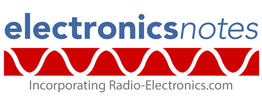Home » Component data » Op-amp data » this page
741 Operational Amplifier, Op-Amp Data
Key data for the 741 general purpose operational amplifier, op-amp, including key electrical parameters, performance, features, pinout, package type and many other key datasheet details.
Key details and performance parameters for the 741 operational amplifier.
| 741 op-amp datasheet parameters & data |
|
|---|---|
| Parameters | Details |
| Op-amp type | General purpose |
| Package type | 8pin DIL |
| Max supply voltage (v) | ±15V (±18V max) |
| Power dissipation (mW) | 500 |
| Max differential input (V) | ±30V |
| Junction temperature (°C) | 100 |
| Input offset voltage(mV) | 1mV typical 5mV max |
| Input offset current (nA) | 20nZA typ, 200nA max |
| Input bias current (nA) | 80nA typ, 500nA max |
| Input resistance (MΩ) | 0.3MΩ min, 2MΩ typical |
| Input voltage range (V) | ±12V min, ±13V typ. |
| Large signal voltage gain(V/mV) | 50 min, 200 typ. |
| Output voltage swing (V) | ±12V min, ±14V typ for ±15V supply |
| Common mode rejection ratio, CMMR | 80dB min, 95dB typ. |
| Supply voltage rejection ratio | 86dB min, 65dB typ. |
| Slew rate | 0.5V/µs |
| Supply current | |
| Power consumption | |
Outline & pinout:
Explanation of operational amplifier parameters
| Parameter | Explanation |
|---|---|
| Max supply voltage | This is the maximum voltage that should be applied to the operational amplifier. As many of them operate on dual supplies this may be given as ± representing the maximum for both the positive and negative supplies. |
| Power dissipation | This is the maximum power dissipation permissable for the device. |
| Maximum differential input | This is the maximum difference that may exist between the two inputs, -IN and +IN. It can normally be in either sense so it is stated as ± xxV. |
| Junction temperature TJ | This is the maximum temperature that the actual IC chip can operate at, expressed in °C. Remember the ambient temperature will be much less than the actual silicon temperature. |
| Input offset voltage VOS | This is the small DC voltage difference that must be applied between the two input terminals to make the output voltage zero, even when the input signal is zero. |
| Input offset current IOS | This is equal to the difference between the input bias current at the non-inverting terminal (IB+) minus the input bias current at the inverting (IB- ) terminal of the amplifier. |
| Parameter | Explanation |
|---|---|
| Input bias current | This is the DC currents flowing into or out of the amplifier's input pins to create a defined operating point during normal operation. |
| Input resistance | This is the load resistance resulting from the operational amplifier as seen by a preceding stage. |
| Input voltage range | The op-amp input voltage range, also known as the common-mode voltage range (CMVR), is the range of voltages that can be applied to the op-amp's inputs while maintaining linear and predictable operation. |
| Large signal voltage gain | |
| Output voltage swing | |
| Common mode rejection ratio, CMMR | |
| Supply rejection ratio | |
| Slew rate | |
| Supply current | |
| Power consumption |
These are the main operational amplifier parameters that have been included in our list. There are others, but these help quantify the main elements of the performance of the regulator, but are normally deemed to be less important.
Please note, that the data given is the best estimate we can give within a tabulated summary of this nature. Parameters also vary between manufacturers. Electronics Notes cannot accept any responsibility for errors, inaccuracies, etc, although we do endevaour to ensure the data is as accurate as possible.
Notes and supplementary information
• Availability & sources
The uA741 is available from a number of stockists and electronic component distributors many of which are given in the table below.
uA741 Component Distributor, Stock and Pricing
• Further details
The 741 is probably one of the all-time largest produced operationa amplifiers. Initially produced as far back as the 1960s and 70s, it has remained a current active part since then. It provides all the capabilities that are normally required for a basic general purpose operational amplifier.
 Written by Ian Poole .
Written by Ian Poole .
Experienced electronics engineer and author.
Return to Component Data menu . . .



